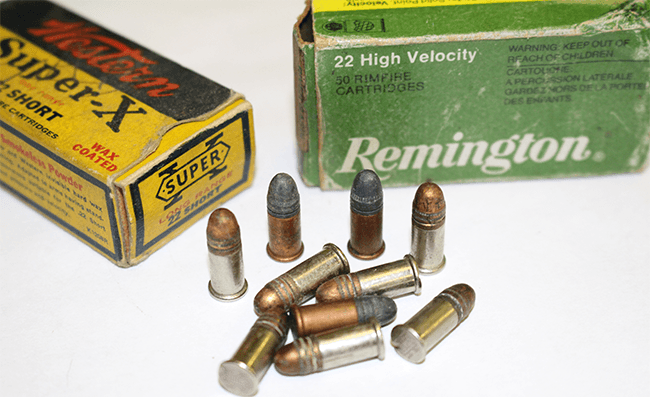Welcome back to another edition of The Rimfire Report! In this week’s edition, we are going to overview a very brief history of some of the most interesting offerings of rimfire ammunition that have been produced throughout the years. While rimfire has been mostly relegated to pest control and target shooting in modern times, rimfire ammunition has served in militaries across the world and was once the standard for repeating arms across all walks of life. So let’s take a look at some of the most iconic and important rimfire ammunition throughout history.

The Rimfire Report: A Brief History of Rimfire Ammunition
The Rimfire Report: A Brief History of Rimfire Ammunition
Flobert 22 bb/22 CB 6mm Flobert
The home of all rimfire ammunition can be traced back to Europe where Louis-Nicolas Flobert developed the idea of the first fully self-contained metallic cartridge. The Flobert .22 BB was introduced in 1845 and was used as a “parlor gun” within shooting galleries. The Cartridge was extremely anemic, only having about as much muzzle velocity as some toy air rifles (700-800 fps).

The 6mm Flobert was basically just a 22 caliber ball pressed into a rimmed percussion cap and contained no propellant besides the priming material in the rim.
The design was simple, basically being a 22 caliber ball inserted into a rimmed percussion cap. No propellant was used in the making of the 22 BB or its closely related 22 CB which used a canonical bullet and was much more common. Collectively both cartridges are called 6mm Flobert and were the inspiration for all rimfire cartridges to come.

An example of a Flobert 22 CB
22 short/22 long/ 22 Extra Long/22 Long Rifle
The development of the Flobert 6mm inspired US Firearms manufacturer Smith & Wesson to develop their own cartridge for their first revolver. 22 Short hs the honor of being the first American metallic cartridge domestically made. The first-ever loading of the 22 Short contained a 29-grain or 30-grain bullet and used 4 grains of black powder. Ironically enough, the 22 Short was developed specifically for self-defense using pocket pistols and the aforementioned revolver made by Smith & Wesson.
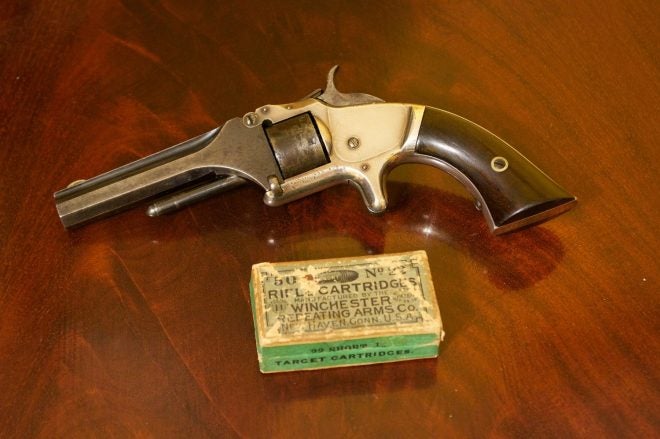
The Smith & Wesson Model 1 22 Short revolver
22 Long was developed not long after 22 Short and carried with it more power due to the extended case length. 22 Long used the same 29-grain bullet but had about 25% more capacity for powder. The round was used mostly on farms for pest control or for hunting small game.

22 Long Rifle vs 22 Extra Long
A short number of years later in 1880 the 22 Extra Long was introduced and used a much heavier 40-grain bullet and 6-grains of black powder giving it increased velocity and penetrating power. However, 22 Extra Long was purported not to have the greatest accuracy and was replaced 8 years later by what has been quite possibly the most popular rimfire cartridge ever.

The legendary 22 Long Rifle cartridge has lasted well over 130 years and shows no signs of ever disappearing
By combining the case and powder charge of the 22 Long and the heavier 40-grain bullet of the 22 Extra Long, the 22 Long Rifle was born. The 22 Long Rifle (22LR) held many advantages over all preceding casings with a few rare exceptions in specific cases.
The 22 Long Rifle was able to attain much greater velocities than 22 Long while maintaining the same powder charge. The round was first manufactured by J. Stevens Arms & Tool Company in 1887 and has since gone to be used by expert and novice alike and remains to this day in just about any variety you could desire.
44 Rimfire/44 Henry
Named in honor of the great Benjamin Tyler Henry (famous 19th-century American gunsmith), the 44 Henry was designed alongside the equally famous Henry Repeating Rifle manufactured by the New Haven Arms Company in 1860.
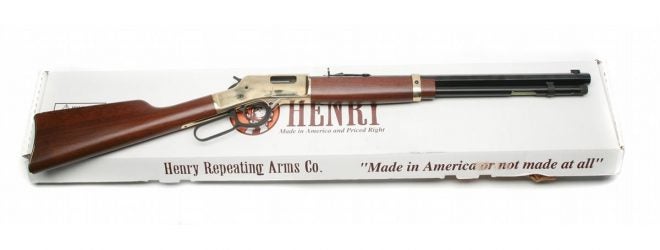
A modern reproduction of the Henry Repeating Rifle
The 44 Henry and the Henry Repeating rifle were used extensively by Union Troops during the American Civil War and were so effective that it was also used by Confederate troops who could capture the rifles. The lever-action rifle went on to serve in the Winchester Model 1866 during the Russo-Turkish war by Turkish troops.
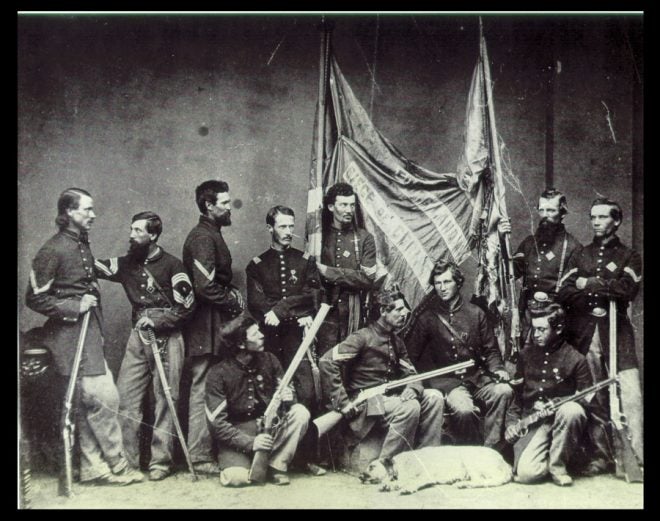
The Henry Repeating Rifle was used to great effect by the Illinois Calvary during the United States Civil War
The cartridge evolved slightly throughout its years of use with the flat-nosed 200-grain bullet eventually gaining a round nose for an increased ballistic coefficient (BC). The round nose brought the BC of the 200-grain lead projectile to 0.153 which is still abysmal by today’s standard for a rifle cartridge. The 44 Henry has about the same ballistic performance as modern-day 45 ACP.

The Rimfire Report: A Brief History of Rimfire Ammunition
Eventually, the cartridge went on to be used in the famous Colt 1873 Single Action Army (SAA). Between 1875 and 1880 colt produced their revolver using the 44 Henry specifically to pair with lawmen, civilians and military men who used the Henry and Winchester rifles chambered in the same caliber. The cartridge saw major use until it was eventually phased out from commercial use and manufacture in the 1930s.

The Rimfire Report: A Brief History of Rimfire Ammunition
38 Rimfire
Developed in the 1870s through the early 1900s the 38 Rimfire was mostly used by the United States Army. Produced in short, long and extra-long variants, the cartridge was used in both rifles and pistols and originally loaded with black powder until new smokeless powders were developed in the early 1900s.

The Rimfire Report: A Brief History of Rimfire Ammunition
38 Rimfire gave the user better power and defensive capabilities than the earlier developed 32 rimfire caliber which saw some limited use in the preceding years. The 38 Rimfire also gave users of revolvers and rifles the ability to shoot either 38 Short or 38 Long.
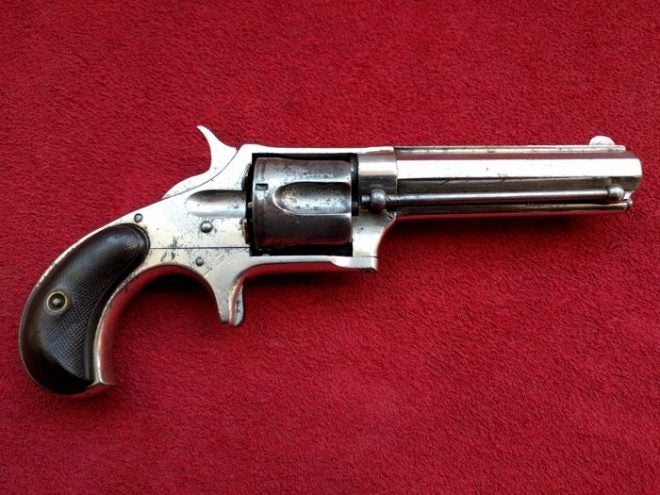
A 38 Rimfire Remington smoothbore revolver
This caliber also saw use in the American Civil war and extensive civilian use as a self-defense weapon, usually being found in the form of a small revolver concealed inside of a vest pocket.
Long-Lasting Concept
Today, rimfire cartridges have recessed almost entirely into the civilian shooting scene. While rimfires are cheaper to shoot, centerfire cartridges offer many advantages that make them better suited for today’s self-defense and combat needs. Even so, the rimfire lives on today, mostly in the form of 22 Long Rifle, 17 HMR, and 17 Mach 2 cartridges, all of which are great hunting and target shooting cartridges.
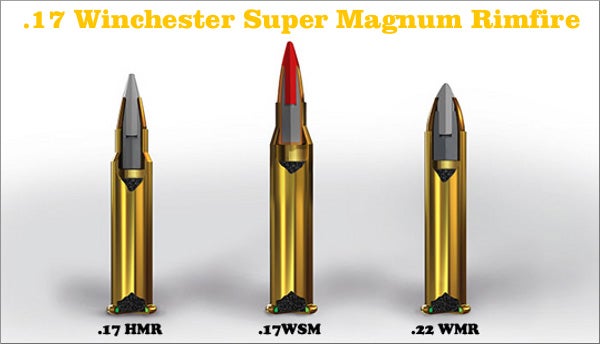
The Rimfire Report: A Brief History of Rimfire Ammunition
So what are your thoughts on the history and development of the rimfire category of ammunition? There are many other rimfire calibers that we weren’t able to cover in this brief History Coverage of the category. Is there any on this list that you feel we needed to include or what are some of your favorites from this list? Let us know down in the comments and as always, thanks for stopping by to read The Rimfire Report.

The Rimfire Report: A Brief History of Rimfire Ammunition
We are committed to finding, researching, and recommending the best products. We earn commissions from purchases you make using the retail links in our product reviews. Learn more about how this works.
 Your Privacy Choices
Your Privacy Choices
